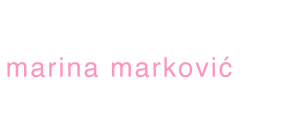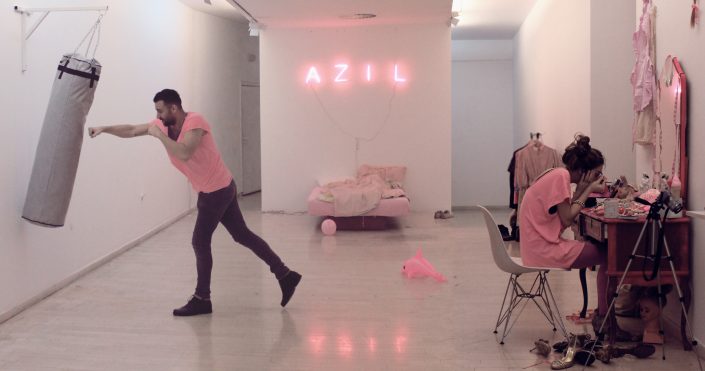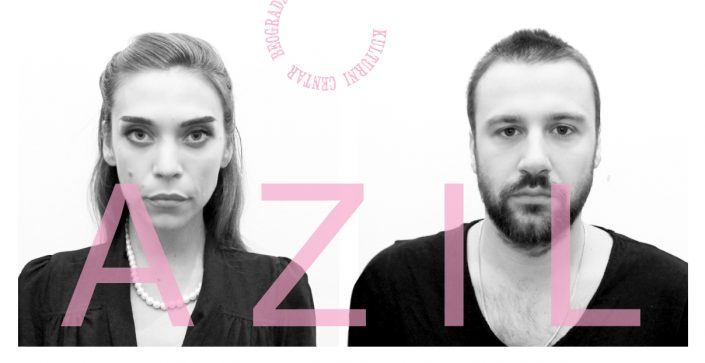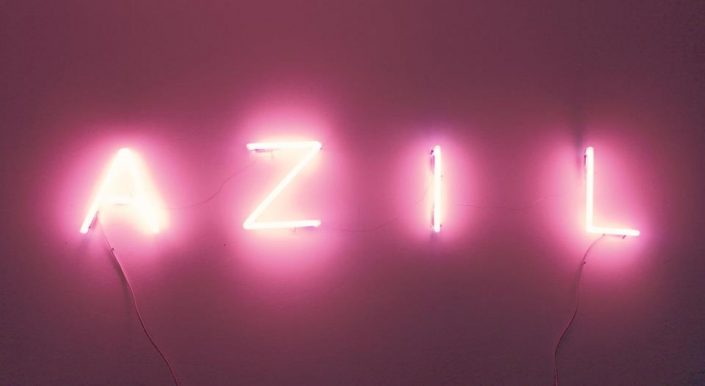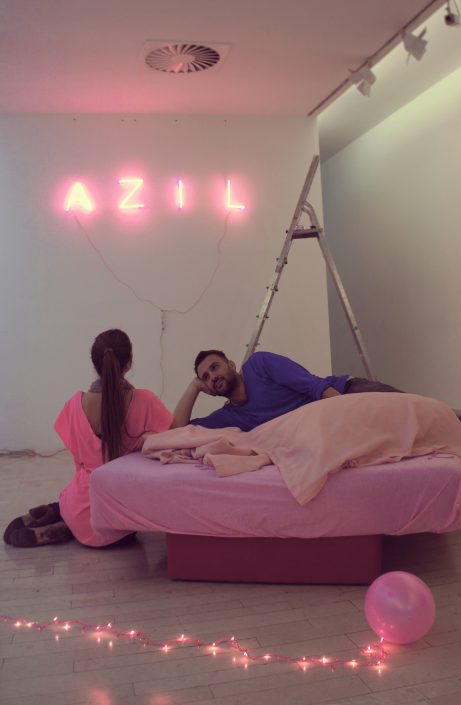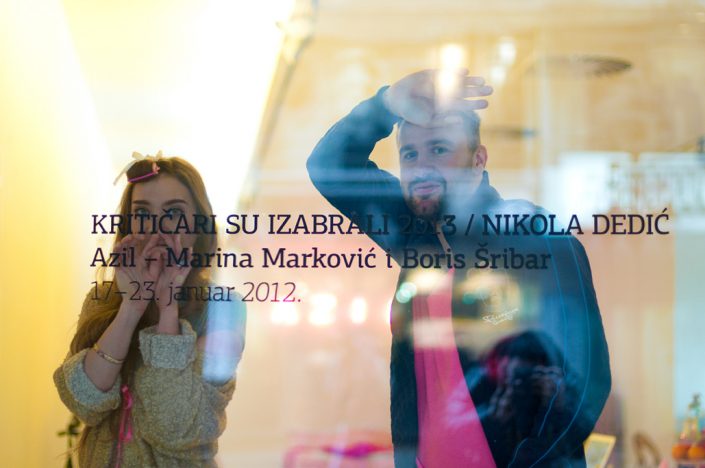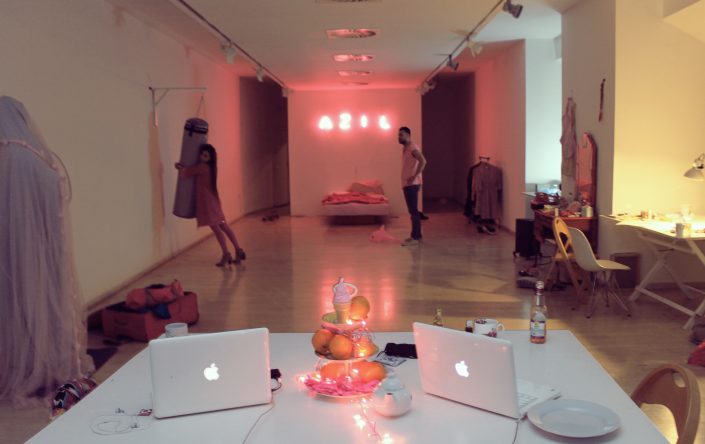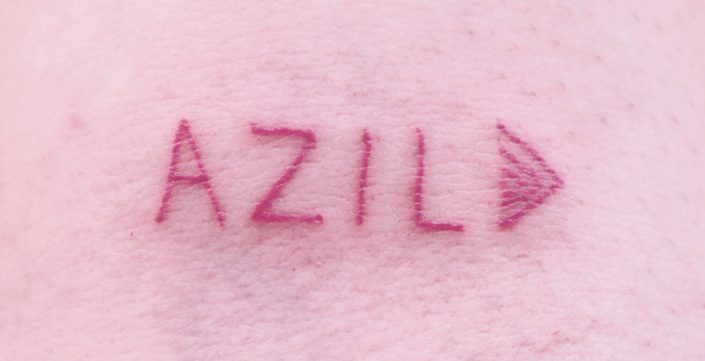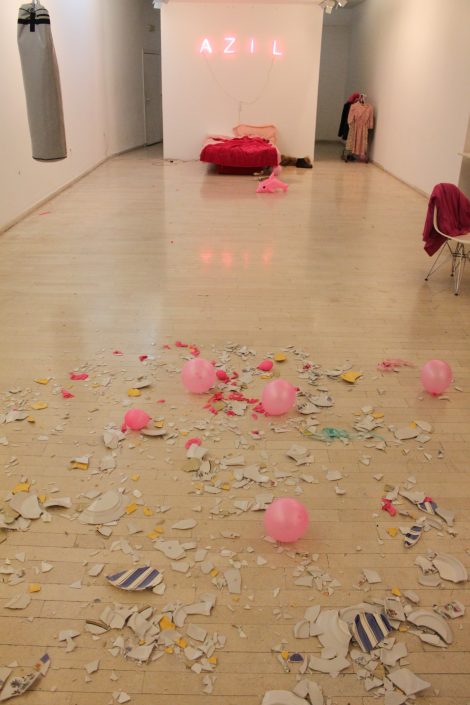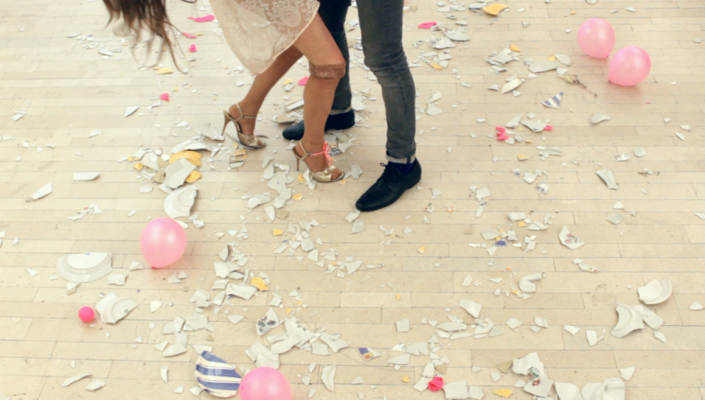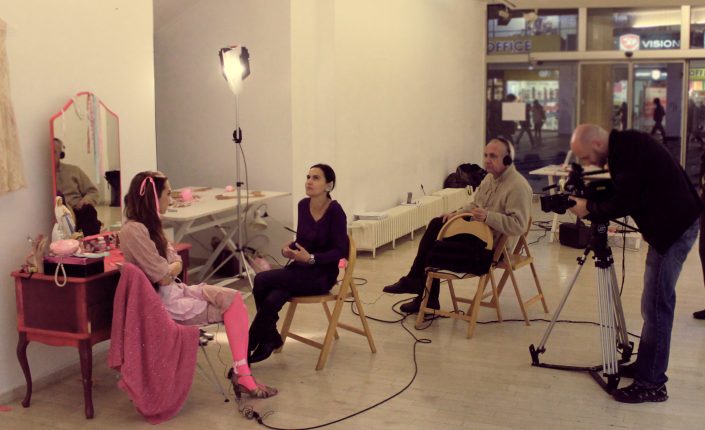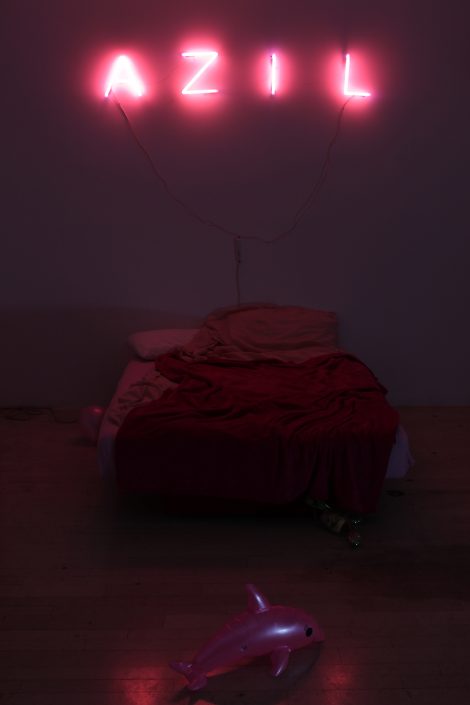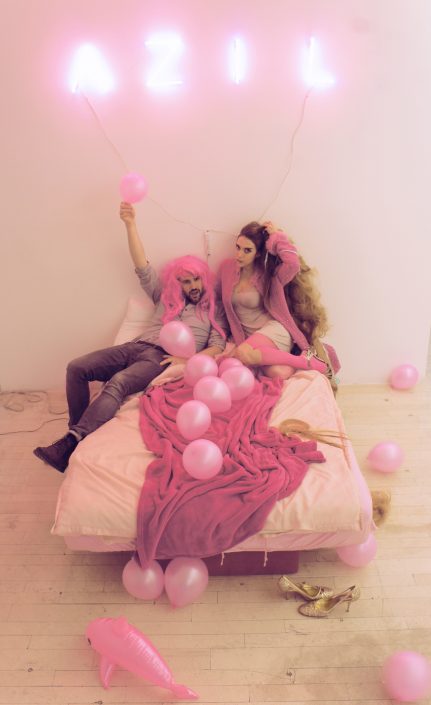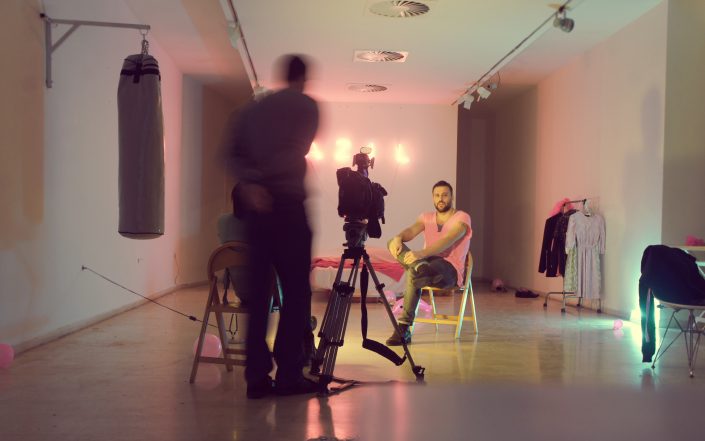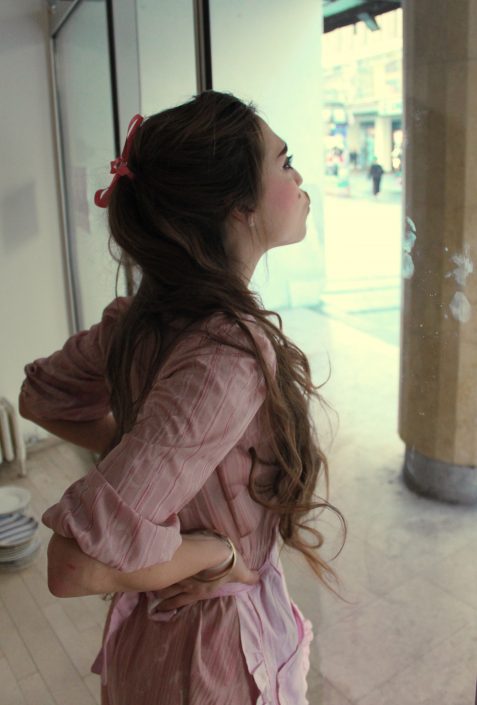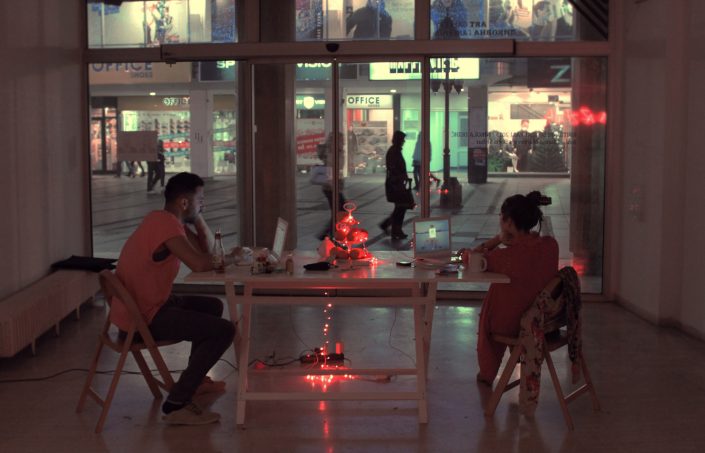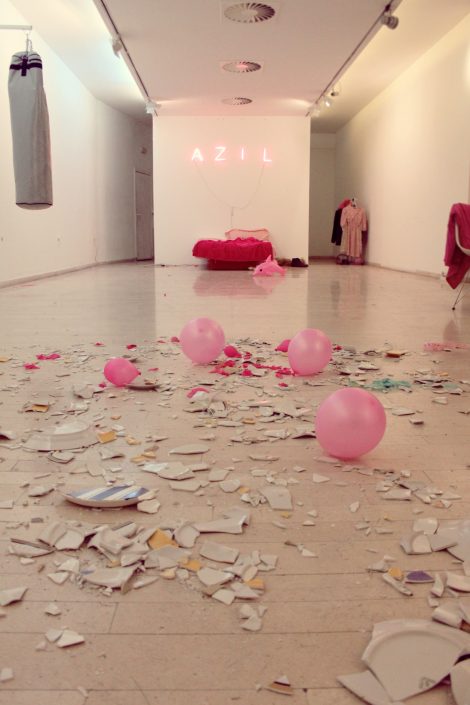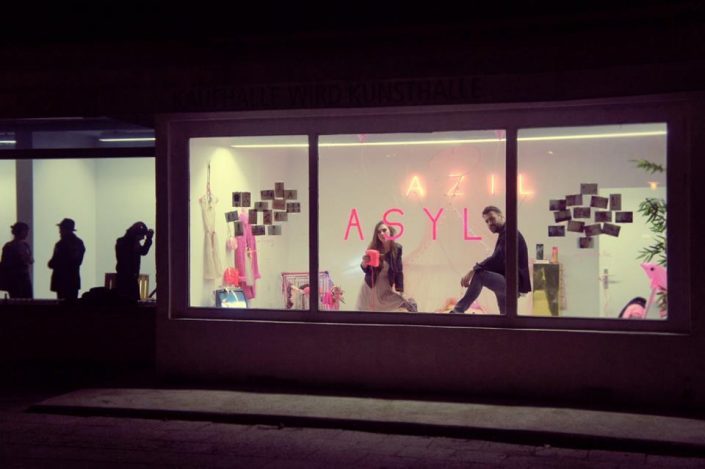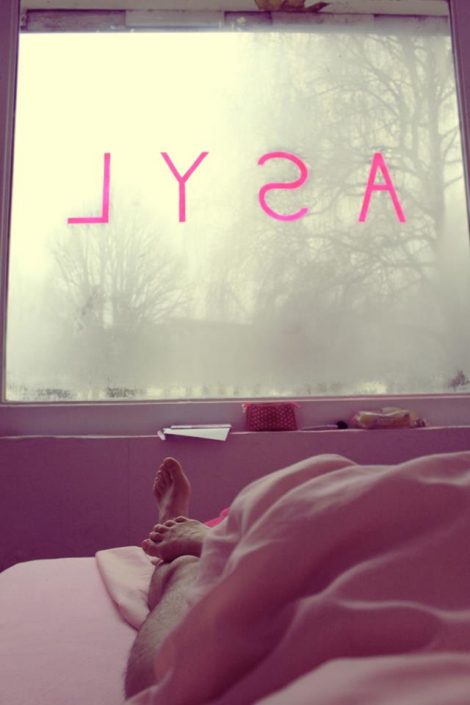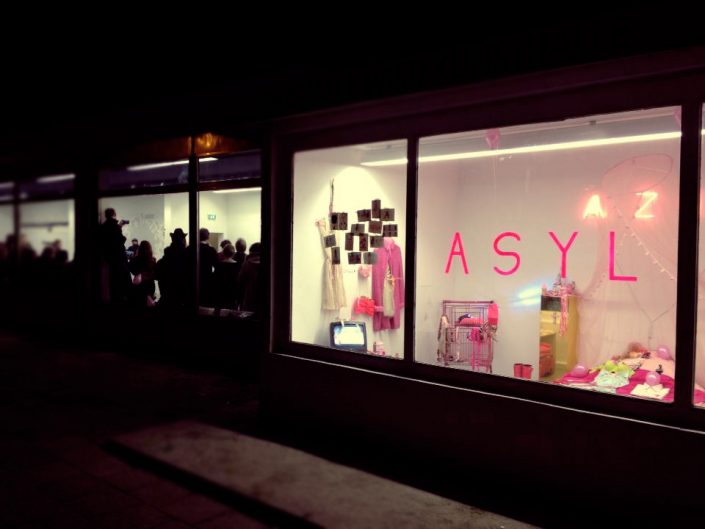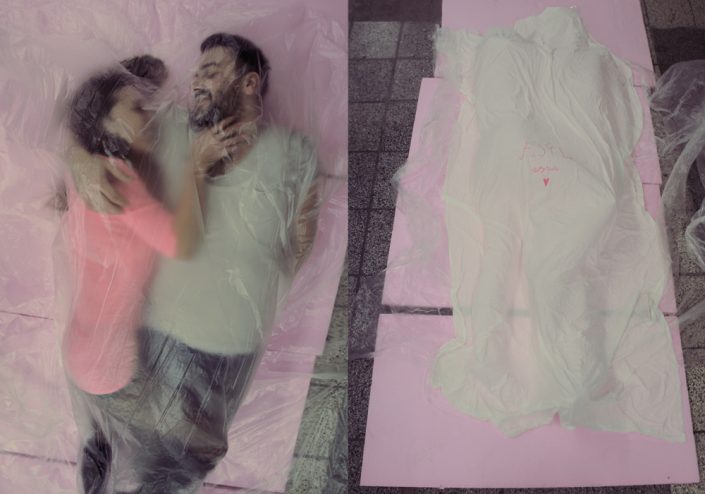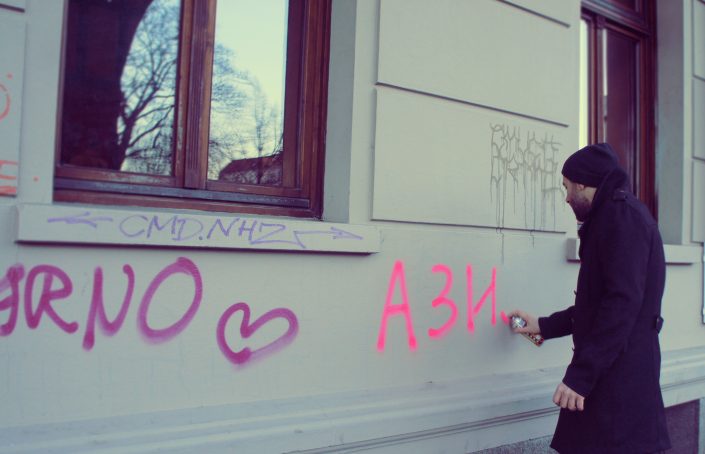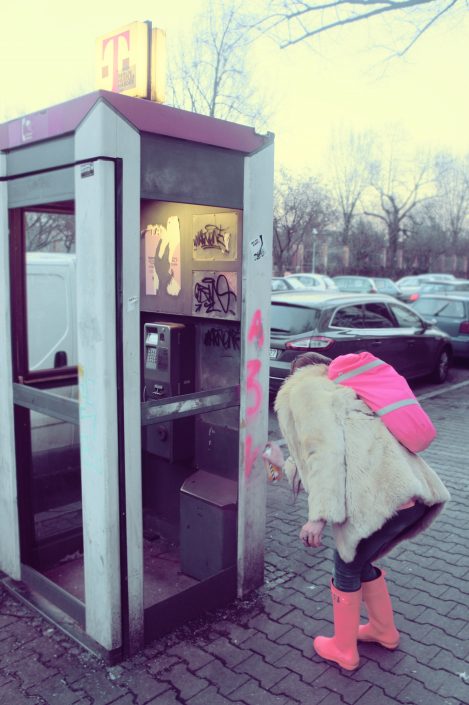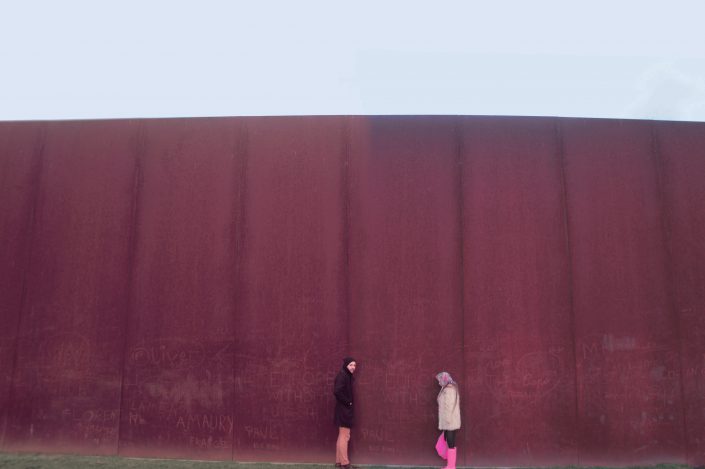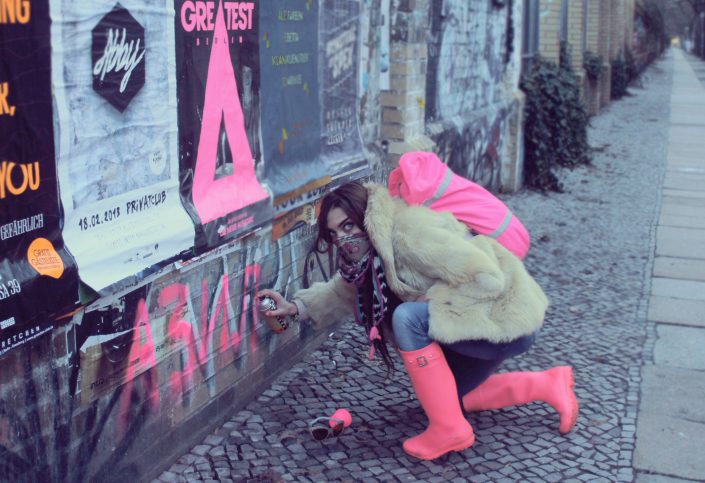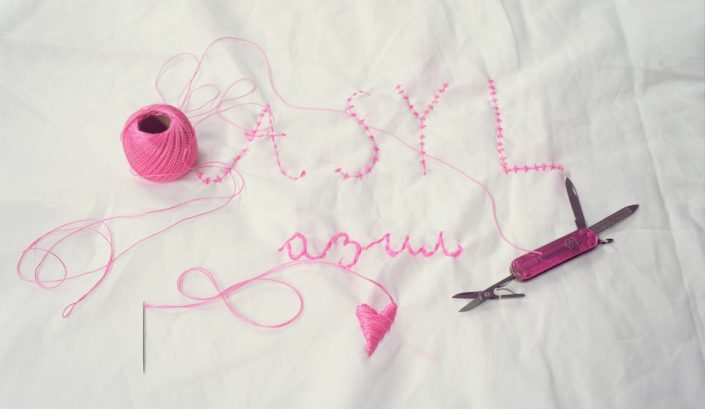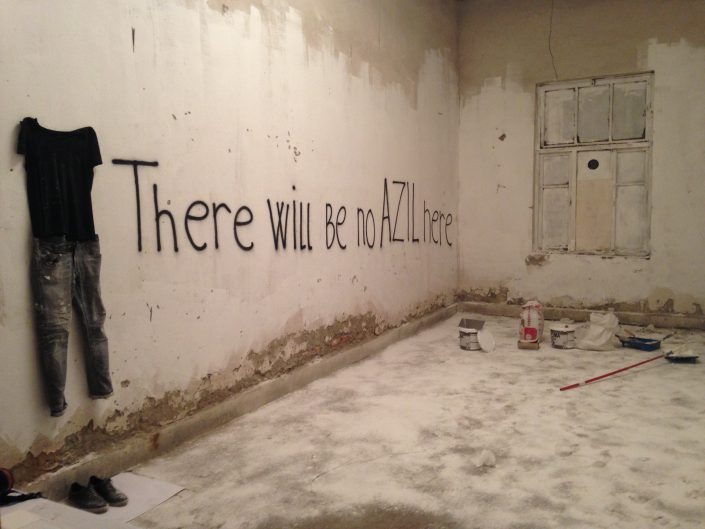ASYLUM
Asylum
The right of asylum represents one of the basic human rights and it entails the change of environment induced by fear for one’s existence or by the lack of place of residence, in cases where person was faced with persecution or hostility in his/her original surroundings. In their work, artists Marina Marković and Boris Šribar personally and professionally identify themselves with asylum seekers who, in spite of instability of their position of being artists within art, seek and find their asylum in the art itself and in gallery as their temporary refuge. Seeking asylum within the gallery, the artists lock themselves up in the gallery for the duration of the exhibition, that is a fortnight, and they live and work there, not being able to leave. Instead of material practice, the artists exhibit themselves, their creative process and living practices, thus exposing their privacy. The potential of the gallery space will be examined in terms of providing living conditions for artists, not only as exhibition area for their work, as well as in the context of providing framework for the fulfillment of the artists’ daily needs, which this work prioritizes over their creative work and production. The most important issues that this work deals with are whether “Asylum” is just a strategy of artistic exhibition, representation of life within the artistic space, or search for the necessary and sufficient mode of expressing the inexpressible, as well as if the naked life, the life itself, exists and how it can be represented.
Secluded and isolated, the authors attempt to transcend physical isolation and face their intimate isolation, the captivity of artist within the range of his/her micro-poetics. This work represents encontre* where in a single, physically confined, space, we have the confrontation of two artistic personae, with similar poetics, however intrinsically deeply ego-centered. Through this basic form of cooperation, cohabitation and working together, the artists state that it is not their decision and that they refuse to be isolated in their own intimate worlds. The borders of the “room of one’s own” expand to make a “place for two”. In their work “Asylum”, the two artists, life and art, are left alone and at the same time among others, in a way that it is characteristic for the daily routine of the celebrities. Thus this asylum is primarily a place of production, for the artists who demonstrated that they do not separate art from life and its praxis, which also in their earlier works includes everyday life trivia’s.
Asylum is an act of strike, a concept of the artists’ physical presence in the space reserved for their art with the purpose of illustrating the notion that the artist’s existence has priority over the existence of the work of art, re-establishing the right taken away from the artist-human being in the neoliberal exhibition machinery. As the artists who wish to live, and only then to create, Marina and Boris will try to remain in the field of art, while simultaneously go public by means of their art and not the strategies of public exposure and engagement. The failure of this performance would affirm the incapability of the art today to provide artist with life satisfaction, as well as xenophobia of the general public towards autonomous artistic practices that could then be labeled as heteronymous, autistic and wholly incommunicative outside stage and circles that are narrowly professional.
Asylum has always functioned as a ” sitespecific ” work in the sense that it has been adjusted in the artistic environment, institutions and countries where it was performed.( Serbia 2012, Germany 2013, Albania 2014…)
